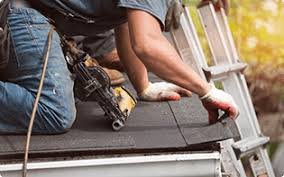Choosing the Right Roof Color to Boost Your Home’s Curb Appeal
crownguard2024-11-05T20:15:14+00:00So, a storm just blew through, and your roof took a hit. Maybe you’re looking at some missing shingles, or worse, you’ve got leaks coming through the ceiling. Whatever the damage, the first thing on your mind is, “How do I get this fixed without breaking the bank?” Well, if you’ve got homeowners insurance, you’re in luck—sort of. The process can feel like a bit of a maze, but I’m here to walk you through it step by step.
Step 1: Assess the Damage
Before you do anything else, take a good look at what’s going on up there. Now, don’t go climbing on the roof yourself (leave that to the pros), but take a walk around your property and snap some photos of the damage from the ground. You want as much evidence as possible when it comes time to file your claim.
Pro tip: Even if the damage doesn’t look too bad, it’s worth checking out. Some issues can be sneaky and turn into big headaches down the line if left unchecked.
Step 2: Call Your Insurance Company
Okay, now that you’ve got your photos, it’s time to ring up your insurance company. Tell them what happened, and they’ll usually send out an adjuster to come take a look. The adjuster’s job is to evaluate the damage and determine how much the insurance will cover.
Heads up: Be detailed when describing what happened. Mention the storm, the wind, the hail—anything that helps connect the damage to the weather event.
Step 3: Get a Roofing Contractor on Board
Here’s where you call in the cavalry—aka, a roofing contractor like Crown Guard. You’ll want a contractor to come out and do their own inspection before the adjuster arrives. This way, you’ve got someone on your side making sure nothing gets overlooked. A good contractor will spot things you might miss, and they’ll also be able to give you an estimate on repair costs.
Pro tip: Don’t just go with the first contractor you find. Make sure they’re reputable and experienced in handling insurance claims.
Step 4: Meet with the Adjuster
When the adjuster comes out, it’s a good idea to have your roofing contractor there too. Why? Because the contractor can point out specific damage, explain the repair needs, and make sure everything gets included in the report. You want to make sure the adjuster and your contractor are on the same page when it comes to the scope of the damage.
Remember: The adjuster works for the insurance company, not you. Having your contractor there keeps things honest and straightforward.
Step 5: Review the Insurance Estimate
Once the adjuster’s done, you’ll get an estimate from the insurance company. This is basically them saying, “Here’s what we think it’ll cost to fix your roof, and here’s how much we’ll cover.” Compare that with the estimate from your contractor to make sure everything lines up.
If there’s a difference: Don’t panic. This happens sometimes. You or your contractor can go back to the insurance company and negotiate the estimate. It’s not set in stone.
Step 6: Get the Repairs Done
Once everything’s squared away, it’s time to fix that roof! Your contractor will get started, and most times, the insurance company will pay out in two stages: an initial payment to get the repairs going and a second payment after the job’s done.
Pro tip: Stay in touch with both your contractor and your insurance company during the process to ensure everything goes smoothly.
Step 7: Final Inspection and Payment
After the repairs are complete, your contractor will usually do a final inspection to make sure everything’s in tip-top shape. If all’s good, you’ll get your final payment from the insurance company, and you’re back to living under a sturdy, storm-proof roof.
The Takeaway
Dealing with storm damage and insurance can feel like a hassle, but it doesn’t have to be. With the right steps and a solid team (like your roofing contractor), the process can be smooth as butter. Just stay organized, be patient, and remember to ask questions when you’re not sure about something.
Need help with roof repairs after a storm? Crown Guard has your back. We’ll walk you through the process, work with your insurance, and get your roof back to protecting your home in no time!








